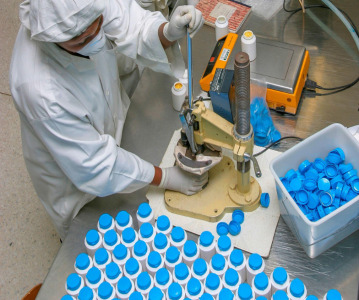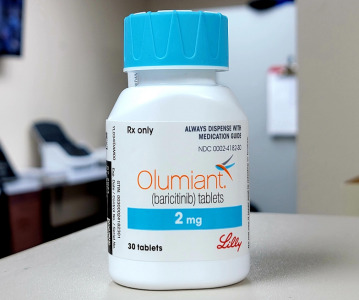Novel approach to creating sustainable packaging from rice husks
.png)
Researchers have created a new approach to the designing of eco-friendly nanofibres extracted from rice husks, addressing the critical need for sustainable packaging materials in food and biopharmaceutical products.
A team of researchers, led by YoungHoon Jung and HyeJee Kang from Kyungpook National University, have demonstrated a novel method of creating chitosan-based composite films utilising nanofibres extracted from rice husks. The method highlighted in their research is notable for its usage of an agricultural waste product in the production of a potential packaging material, promoting circular economic practices.
The process involves a chemical pretreatment of rice husks and enzymatic hydrolysis during a biorefinery process. This produces lignin-rich lignocellulose nanofibres. These nanofibres offer unique hydrophobic properties and strength. When incorporated into chitosan and formed into composite films, the material gives enhanced mechanical and structural integrity. By repurposing what would be a waste product, this process contributes to overall waste reduction and marks a step forward for sustainable resource management. Moreover, the controllable process developed by the researchers may also allow for customised film formation, increasing economic feasibility for the biomaterials industry.
Establishing a circular economy within the pharmaceutical supply chain has dominated talks around sustainability, with particular attention towards pharmaceutical packaging. The need for sustainable primary and secondary pharmaceutical packaging often present challenges related to scaling supply chain operations and safety and efficacy preservation of the drug products. This process demonstrates an innovative approach towards sustainable material development in tandem with the feasibility of creating composite films from waste products. For the pharmaceutical packaging sector, these composite films also offer unique UV-blocking properties, highlighting potential usage in pharmaceutical and biomedical device packaging. The lead researchers emphasised the significance of the study and innovative development method in paving the way forward for greener biomaterial packaging for food and pharma.
Sources:
1. Rice husk can be used as a promising sustainable packaging material [Accessed March 27, 2024] https://www.eurekalert.org/news-releases/1039048
2. Kang HJ, Lee YJ, Lee JK et al. Production of Chitosan-Based Composite Film Reinforced with Lignin-Rich Lignocellulose Nanofibres from Rice Husk, J. Bioresour. Bioprod. Published online 15 March 2024. doi: 10.1016/j.jobab.2024.03.002
3. The CPO Starter Pack: Why and When to Bring in a Contract Packaging Partner [Accessed March 27, 2024] https://www.cphi-online.com/the-cpo-starter-pack-why-and-when-to-bring-in-a-news120889.html
Related News
-
News Women in Pharma: Moving beyond discussions and into best practice at CPHI Milan
In this second CPHI Milan special of our monthly series, we cover the key takeaways from the Diversity & Wellbeing track held on October 10, 2024. -
News AstraZeneca invests in AI collaboration for cancer drug trials
The British-Swedish pharmaceutical giant is partnering with biotechnology firm Immunai Inc to increase the efficiency of some cancer drug trials. -
News Ozempic and Wegovy prices questioned as Novo Nordisk faces US Senate hearing
The CEO of Novo Nordisk was grilled during a US Senate committee hearing on September 24, 2024, in which the exorbitant prices of the Danish company’s blockbuster drugs Ozempic and Wegovy were called into question. -
News The BIOSECURE Act: implications for the pharma supply chain
On September 9, 2024, the US House of Representatives voted to pass the bill titled the BIOSECURE Act (the Act), which lists several Chinese companies in the pharmaceutical supply chain. The Act will prohibit American companies from contracting or doin... -
News On Track at CPHI Milan: Thermo Fisher Scientific Track Sponsor interview
With CPHI Milan just around the corner, we sat down with some of the sponsors for this year’s conference tracks to discuss the most pressing topics in pharma. -
News CPHI Milan Speaker Spotlight: Pharma Manufacturing and Localisation in Africa
In the run-up to CPHI Milan, we sit down with some of the experts and thought-leaders speaking at this year’s conferences. -
News US BIOSECURE Act passed by US House of Representatives
The controversial act, which has already impacted several foreign companies operating in the US, was passed by the House of Representatives on September 9, 2024. It is now headed for the US Senate before it can be signed into law by President Joe Biden... -
News Eli Lilly licenses rheumatoid arthritis manufacturing in Africa
American pharmaceutical company Eli Lilly has signed a partnership with Egyptian organisation Eva Pharma to localise manufacturing of rheumatoid arthritis treatments in Africa.
Position your company at the heart of the global Pharma industry with a CPHI Online membership
-
Your products and solutions visible to thousands of visitors within the largest Pharma marketplace
-
Generate high-quality, engaged leads for your business, all year round
-
Promote your business as the industry’s thought-leader by hosting your reports, brochures and videos within your profile
-
Your company’s profile boosted at all participating CPHI events
-
An easy-to-use platform with a detailed dashboard showing your leads and performance

.png)





